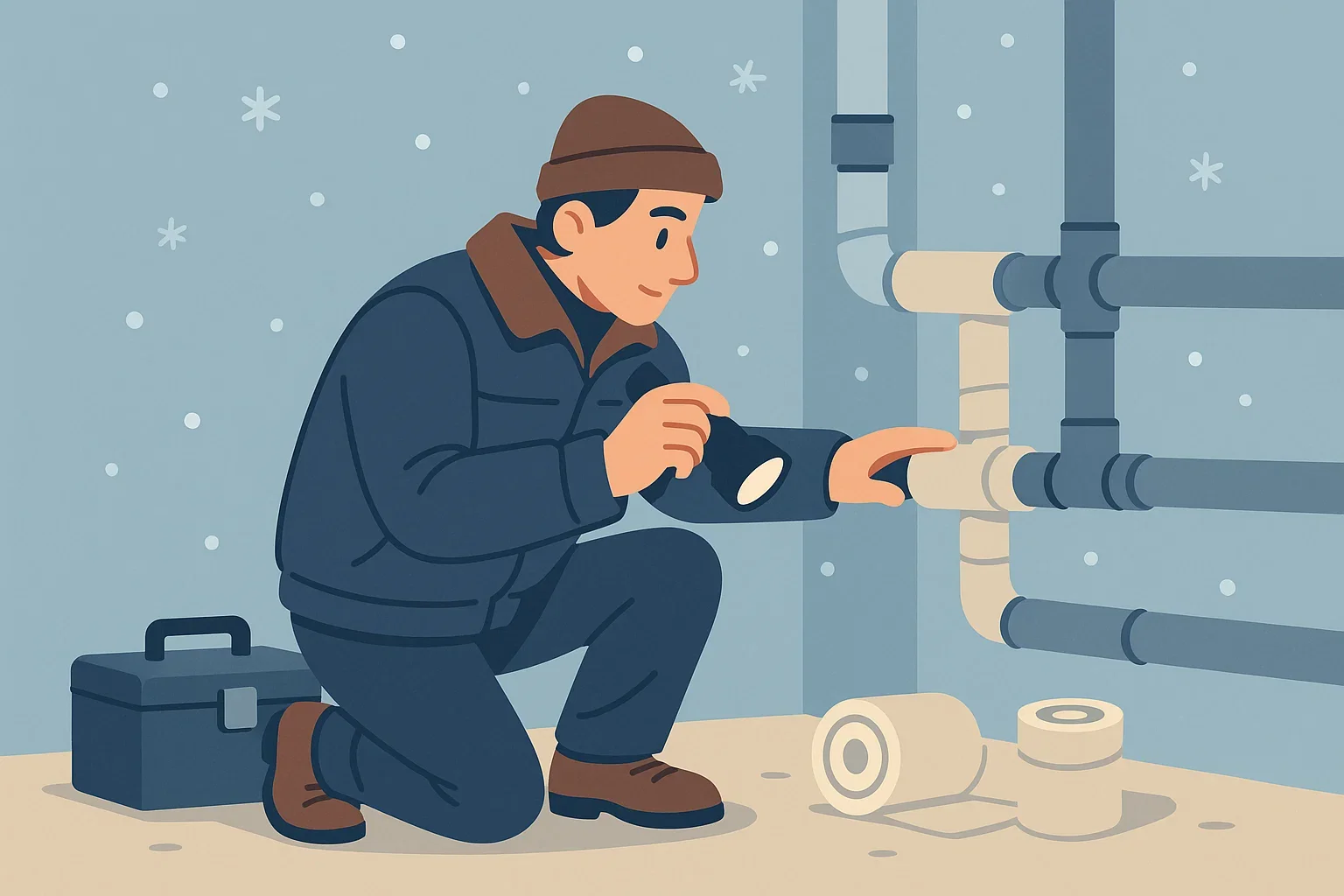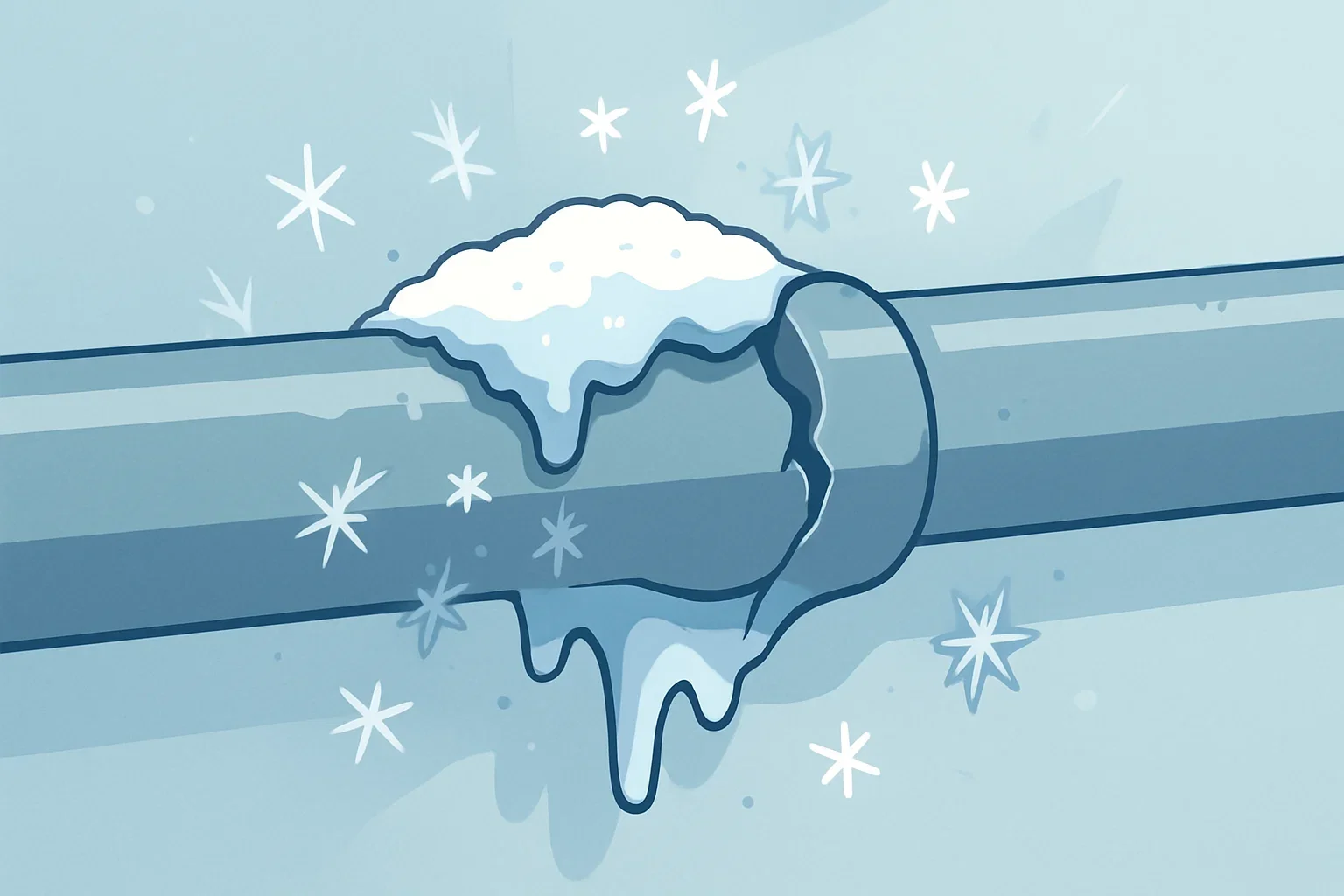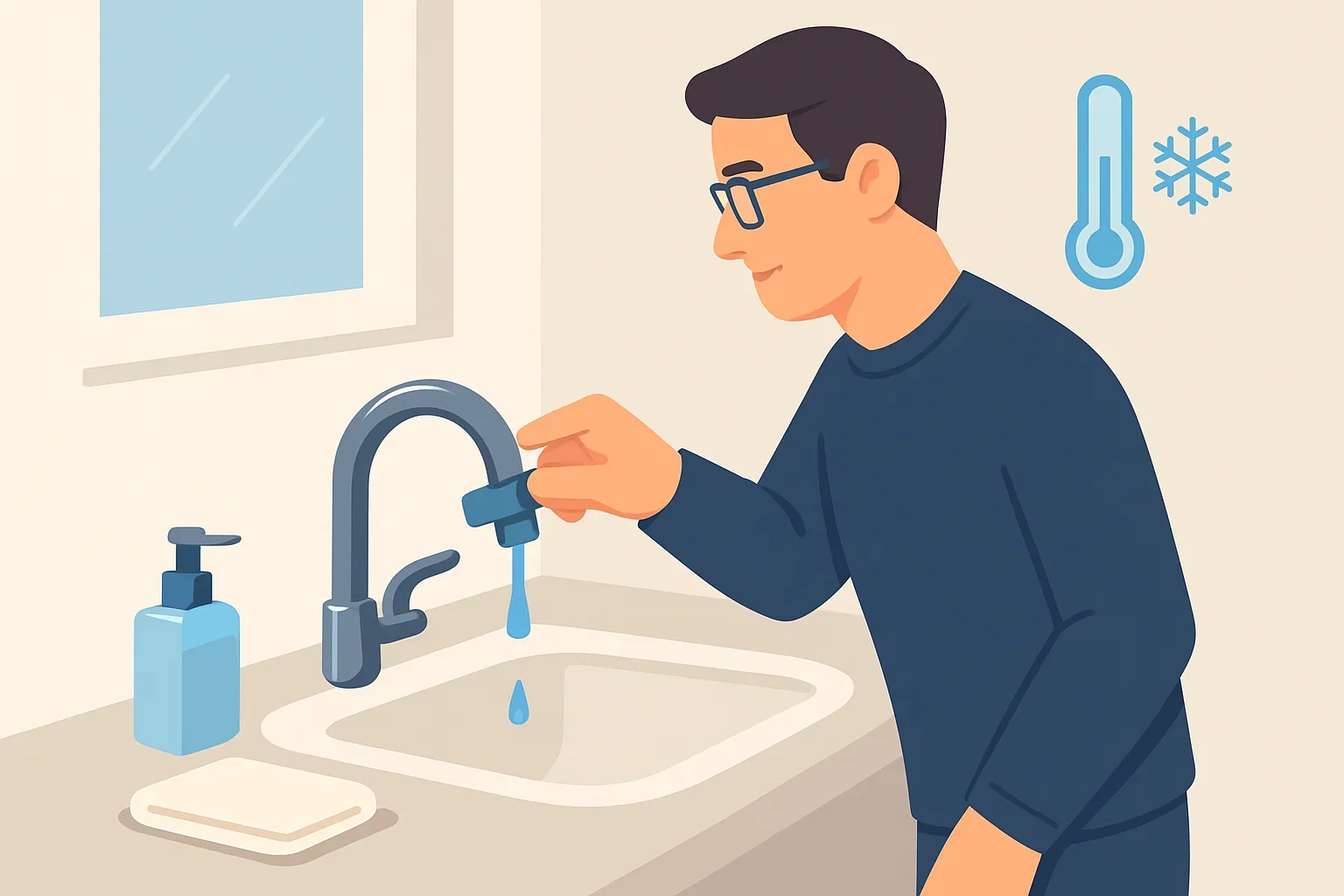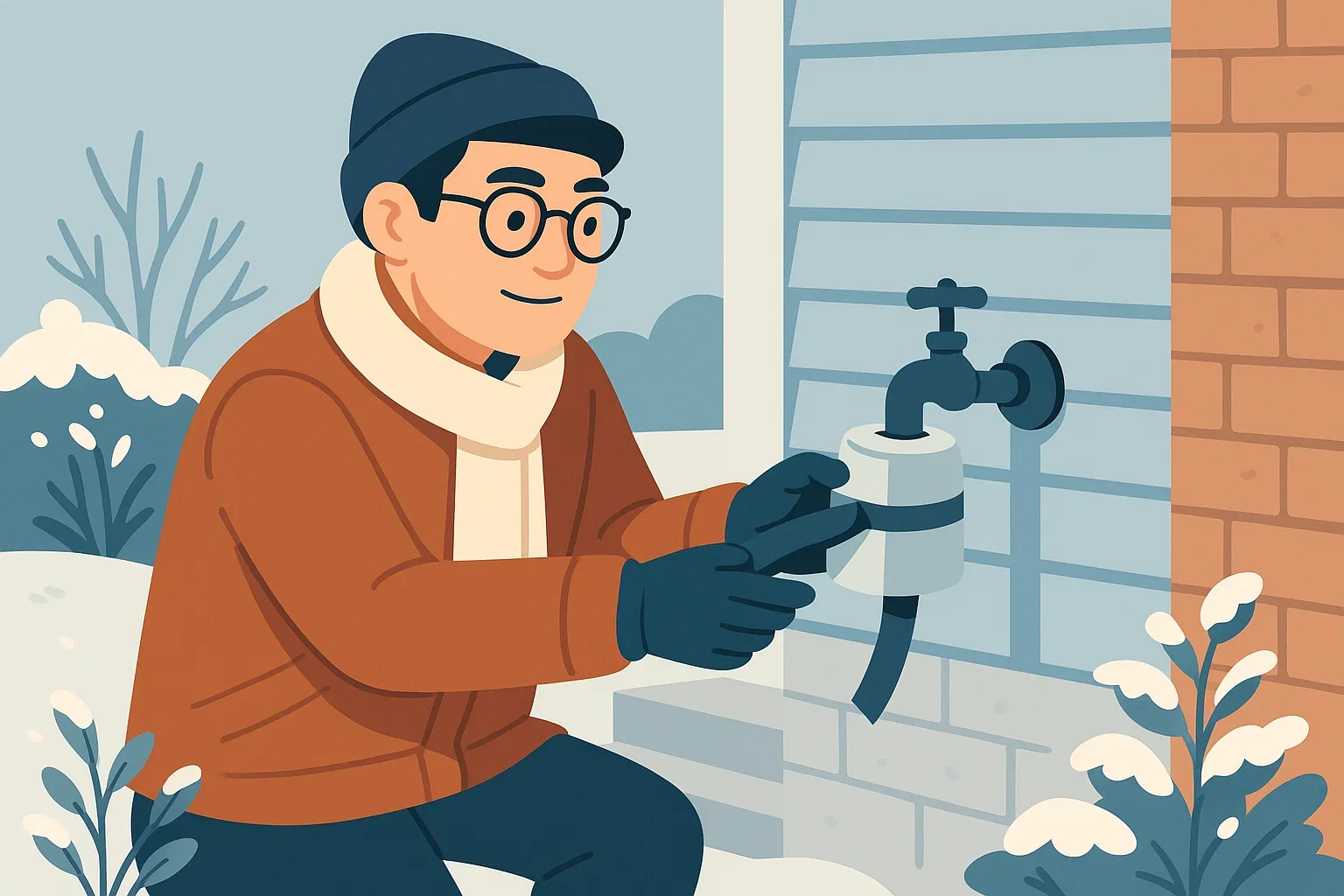Prevent Frozen Pipes in Guthrie Homes Before the Next Freeze
Why Frozen Pipes Are a Big Winter Problem
When Oklahoma temperatures drop below freezing, frozen pipes become a nightmare for homeowners. Even in areas like Guthrie and Edmond, where winters are usually mild, one hard freeze can lead to thousands of dollars in damage. Burst pipes can flood your home, ruin flooring, and lead to expensive repairs. The good news is that with a few preventive steps, you can keep your plumbing safe all winter.
What Happens When Pipes Freeze
When water freezes inside a pipe, it expands by about nine percent. That pressure builds up, often causing the pipe to burst. Nationwide, about 250,000 homes experience frozen or burst pipe damage each year, with the average repair costing around $20,000. Oklahoma saw millions in damages during the February 2021 deep freeze, when subzero temperatures overwhelmed homes not built for Arctic cold.
In Guthrie and surrounding counties, pipes are especially vulnerable because many older homes have plumbing that runs through uninsulated crawl spaces, attics, or exterior walls. These spots get cold quickly and can freeze even if the rest of the house is warm.
Top Questions People Ask About Frozen Pipes
1. At what temperature do pipes freeze?
Most pipes start freezing when temperatures stay around 20°F for several hours. But even at 28°F, outdoor or attic pipes without insulation can freeze. When water turns to ice, it blocks flow and builds pressure, which causes the pipe to burst.
2. Should I leave my faucets dripping?
Yes. Letting your faucets drip slightly during freezing weather helps prevent ice buildup. It keeps water moving, which makes freezing less likely, and it relieves pressure in your pipes. The American Red Cross recommends dripping faucets connected to exposed pipes and opening cabinet doors under sinks so warm air can circulate.
3. How do I know if my pipes are frozen?
If only a trickle of water comes out when you turn on a faucet, a pipe may be frozen. You might also see frost on exposed sections of pipe or smell strange odors from a drain. If this happens, keep the faucet open and try gently warming the frozen section using a hair dryer or heating pad.
4. What’s the safest way to thaw frozen pipes?
Always start by keeping the faucet open. Use gentle heat, like a space heater or hair dryer, and never use an open flame. Work slowly from the faucet end toward the frozen section. If you suspect a pipe has burst, shut off your home’s main water valve immediately and call a plumber.
5. What temperature should I keep my home at?
Keep your thermostat set at 55°F or higher, even when you’re away. This small step helps protect wall and attic pipes from freezing and bursting.
Local Insights from Guthrie and Edmond
Oklahoma homeowners often underestimate how fast a freeze can hit. In the 2021 Arctic blast, many Guthrie and Edmond houses with crawl spaces suffered burst pipes when the temperature plunged below zero. Local plumbers reported hundreds of emergency calls within 48 hours of the storm.
Homes in Guthrie’s older neighborhoods are especially prone to pipe freezes because of their age and crawl-space construction. Local plumbers recommend covering exterior crawl space vents during extreme cold to trap warmer air, then reopening them when temperatures rise to avoid moisture buildup.
Also, know where your main water shutoff valve is. It’s often located near your water meter or just outside your home. In case of a burst, turning it off quickly can prevent thousands in damage. If the power goes out during a freeze, dripping faucets and insulating crawl space pipes can buy you valuable time until heat returns.
Simple Steps to Prevent Frozen Pipes
Insulate exposed pipes in crawl spaces, attics, garages, and exterior walls.
Disconnect garden hoses and shut off outdoor faucets before freezing weather.
Install foam faucet covers on outdoor spigots.
Seal air leaks around windows, vents, and doors to keep cold air out.
Use UL-listed heat tape on pipes that are prone to freezing.
Let faucets drip during freezing temperatures.
Keep your thermostat steady, day and night.
Open cabinets under sinks on exterior walls to let warm air circulate.
Taking these simple actions before a cold snap can save you from major water damage later. As one local restoration expert said, “Saving a few dollars on heat isn’t worth a $20,000 repair bill.”
Stay Warm, Stay Protected
Freezing weather in Oklahoma may not last long, but even one night of subzero temperatures can wreak havoc on your home’s plumbing. Preparing now ensures you won’t wake up to a burst pipe and water damage.
Start with simple steps: insulate, drip, and maintain steady heat. Guthrie homeowners who plan ahead will stay dry and stress-free all winter long.





